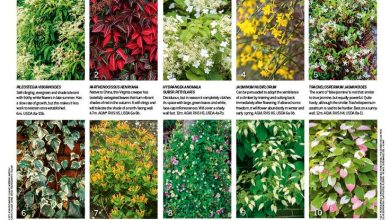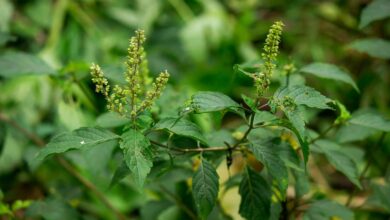Jasmine: How to Plant it and its Care
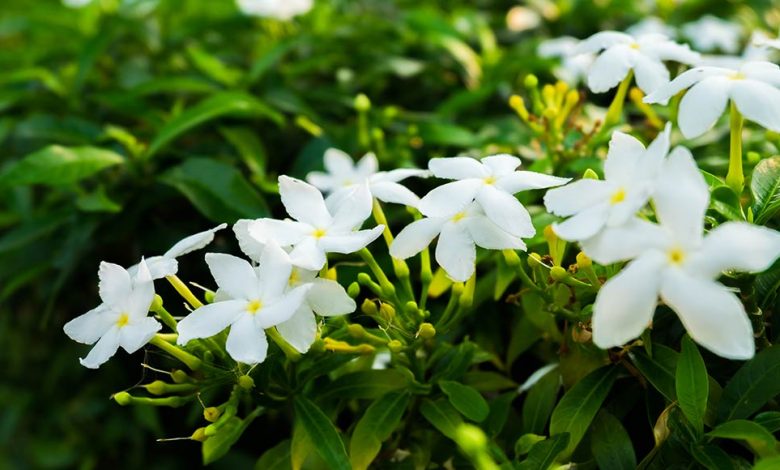
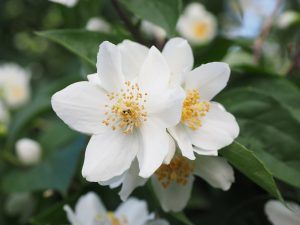 Jasmine is one of the most interesting plants to decorate gardens because it produces white flowers that are very striking.
Jasmine is one of the most interesting plants to decorate gardens because it produces white flowers that are very striking.
The most sought after types of jasmine are also capable of accompanying their flowers with a delicious and delicate perfume that complements the good impact.
In general, it is a shrub, but the vine version can also be planted, which increases interest in working with the species. Are you in the mood to have a beautiful jasmine plant in the garden?
Get ready because you can achieve it with the information that we offer you in Sembrar100
Important points when planting jasmine
- When? In spring or summer.
- Where? In a space in full sunlight, with good drainage and distance from other plants.
- How do we prepare the land? Adaptable to all types of soil with organic fertilizer.
- How should we water? abundantly.
- How often do you have to water? Every two days.
- What care do you need? An annual pruning, fertilization with products for flowering plants.
- What pests and diseases does it have? Cochineal, whitefly, rot due to excess moisture.
Jasmine Characteristics
- Common name: Jasmine.
- Botanical name: Jasminum spp.
- Group: Woody climber.
- Flowering time: Summer and winter.
- Planting time: Summer Jasmine: spring or autumn; winter jasmine: autumn or winter.
- Height and extension: Three to five meters in height and extension.
- Orientation: South or southwest, full sun for summer jasmine; all aspects except dense shade for winter jasmine.
- Resistance: Totally resistant to frost.
- Difficulty: Easy.
Jasmines can be deciduous (the leaves fall in the fall) or evergreen (they are green year-round), and they can be erect, spreading, or climbing shrubs and vines.
Its leaves have an opposite or alternate arrangement and can be simple, trifoliate or pinnate in formation. The flowers are usually about 2.5 cm (0.98 in) in diameter. They are white or yellow, although on rare occasions they can be slightly reddish.
The flowers are borne in cymose clusters with a minimum of three flowers, although they can also be solitary at the ends of the branches. Each flower has four to nine petals, two locules, and one to four ovules.
They have two stamens with very short filaments. The bracts are linear or ovate. The calyx is bell-shaped. They are usually highly scented.
Jasmine fruits are berries that turn black when ripe. The basic chromosome number of the genus is 13, and most species are diploid. However, natural polyploidy exists, especially in Jasminum sambac, Jasminum flexile, Jasminum mesnyi, and Jasminum angustifolium.
When to plant a jasmine?
Between the end of spring and the beginning of summer, which is when the temperature is more pleasant for it to develop.
Where to plant a jasmine?
Jasmine does well in full sunlight, in a clear spot to achieve proper growth for what we’re looking for. It is very important that the ground is loose and with sufficient drainage to avoid waterlogging that puts your health at risk.
If there are other plants planted nearby, it will be necessary to place the jasmine at a distance of at least 2 meters.
How to prepare the land?
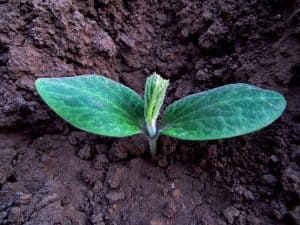 Jasmine is adaptable to different types of land , as long as they are not excessively compact and poor.
Jasmine is adaptable to different types of land , as long as they are not excessively compact and poor.
It is best to prepare it in advance by adding an organic compost and mixing it with the soil to ensure that you can enjoy all the nutrients.
How do we water jasmine?
Abundantly, without flooding. It is essential that the roots can feel enough moisture for the plant to be healthy.
How often do we water the jasmine?
Watering should be frequent, every two days at least, as jasmine needs soil with a high level of moisture.
How to plant jasmine step by step?
The fastest way to reproduce jasmine from scratch is by taking cuttings.The seeds also give good results, but the process is slower. So, the procedure with the cuttings will be like this:
- Take a cutting from a jasmine plant that you think has good characteristics. The ideal is to cut it in late spring and ensure that it is at least 15 centimeters long. The structure of the stem must be semi-woody, that is, it must have green and brown parts and the cut must go above a node.
- Remove all the leaves from the cutting except for the couple that are located at the tip of the stem and they will be greener and newer. They will also be smaller, however this is normal because they are the youngest leaves.
- Dip the cutting in a rooting hormone if you have it available. If not, you can skip this step because the root production rate of jasmine cuttings is generally very good unless the plant they were taken from is in poor condition.
- Prepare a pot with a mixture of garden soil, organic compost and perlite to help with drainage and bury the cutting up to half its height. The ideal here is to support yourself with a waste branch or a pencil to open the hole and not put too much pressure on the jasmine cutting.
- Press your fingers around the edge of the cutting to help keep it stable.
- Water with a moderate amount of water , just to ensure that the soil is slightly moist. The puddles in this phase are explosive to achieve positive results. In fact, jasmine cuttings are among those that do not tolerate root reproduction in water.
- Place the cutting in a lighted space, but that receives indirect sunlight. When the cutting has already produced roots and the seedling is developing properly, it will be time to transplant outside.
- Dig a hole that is wide and deep enough to move the seedling with the root ball attached. This way you will avoid mistreating her. After finishing, water moderately so that all the soil is compacted.
Placing the jasmine near a support, such as a fence, will help it use it to stand upright and thus be more beautiful.
What care does jasmine need?
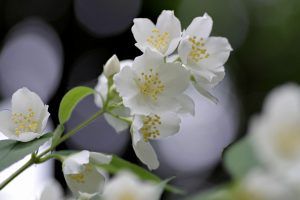 Jasmine can grow abundantly during spring and summer, which motivates annual pruning to improve its structure.
Jasmine can grow abundantly during spring and summer, which motivates annual pruning to improve its structure.
In addition to controlling unruly growth, pruning will also help remove shabby-looking parts to ensure good health.
A healthy plant will be able to offer more flowering in its time, which will greatly benefit the environment.The appropriate time to proceed with pruning is when the flowering period has ended.
It is good to apply fertilization with special products for flowering plants during flowering periods.This action will help to obtain more flowers and with better characteristics.
What pests and diseases affect jasmine?
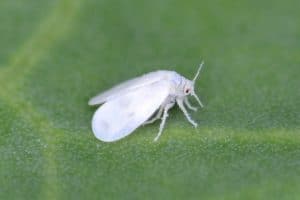 Jasmine flowers are attractive to many types of animals, especially insects, which come close to them to pollinate them.
Jasmine flowers are attractive to many types of animals, especially insects, which come close to them to pollinate them.
These insects are not considered pests because they do not affect the proper development of plants.
However, there are others that, if not detected and attacked in time, can become harmful in every way.Cases such as cochineal and whitefly are counted here.
In the case of diseases, these must be prevented, taking care above all of the soil’s humidity conditions to avoid rotting.The beauty that jasmine gives in each bloom is more than enough reason to want to have them in the garden.
And if we add to that that its care is really little, the benefits of deciding on a specimen of this class increase.
Types of Jasmines
Jasmine belongs to the olive family. The most common types are grown as vines, but there are some varieties that work as ground covers or shrubs as well.
There are about 200 different species of jasmine, which is native to warmer and more temperate tropical climates.
All types of jasmine have slightly different needs, so it’s important to know the varieties before choosing which one to plant.
arabian jasmine
This variety of jasmine is an evergreen shrub or vine. It has highly scented white flowers that open at night. Arabian jasmine can grow from one to three meters tall.

white jasmine
White jasmine is native to Burma and China and is an evergreen climbing plant. Its pink buds appear in late winter and early spring and bloom in the form of fragrant white stars. White jasmine can grow six to nine meters tall and two to four meters wide, so you will need ample space for this variety.
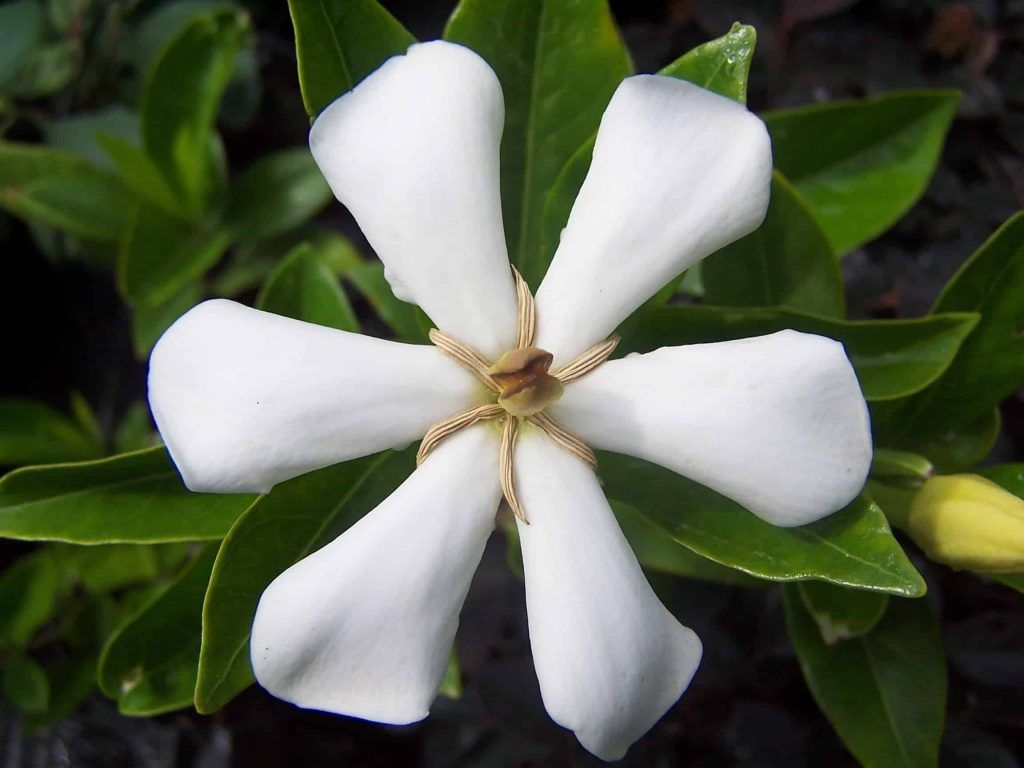
purple jasmine
Purple jasmine flower is also known as star jasmine. This twining vine blooms in spring and summer. It can grow 6 meters as a vine, but can also be grown on a smaller scale as a hedge, shrub or ground cover.
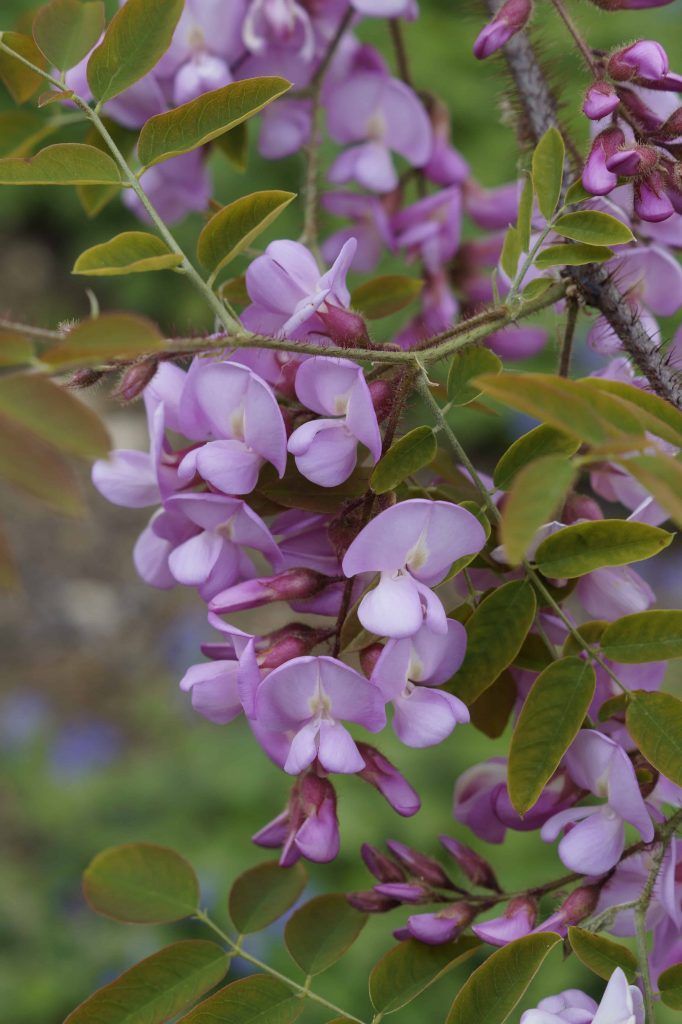
forest jasmine
Forest jasmine, a woody climber, has glossy dark green leaves and glossy white flowers with a slight pink tinge. It is a strong variety, with stems that can grow to more than five inches in diameter.
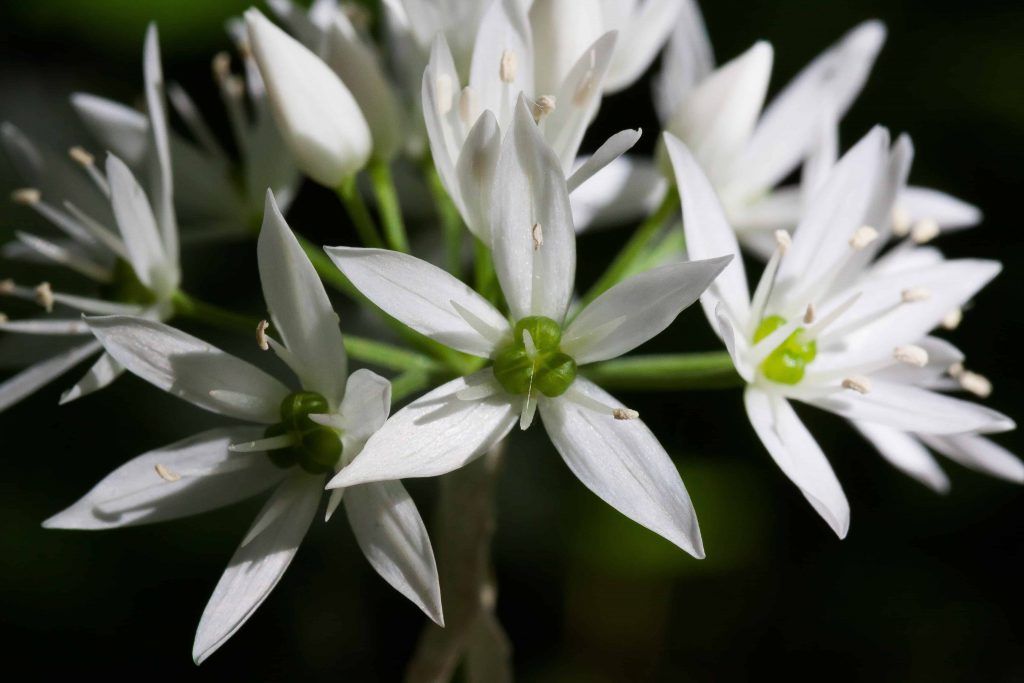
winter jasmine
Growing up to 4 meters tall if grown on a trellis, winter jasmine is known for its striking yellow flowers. Winter jasmine is native to China and, unlike most jasmine, does not tangle.
Therefore, it is necessary to prune it more often than other varieties.
spanish jasmine
Another highly scented variety, Spanish jasmine is a deciduous climbing plant or shrub that is widely used in perfumery. It can grow between two to four meters high.
Common Questions About Jasmine
Is jasmine an annual or perennial plant?
Jasmine is a perennial plant that grows year after year. Different varieties have different watering, space, and sunlight needs depending on the area they are grown in.
How much sun does jasmine need?
All types of jasmine grow well in full sun or partial shade; the exact amount of sun a plant needs each day depends on the variety.
Can jasmine grow indoors or outdoors?
Jasmine can grow both indoors and outdoors. Dwarf varieties grow best indoors, but vines can also thrive indoors. Simply pinch or prune the plant in the dormant season to maintain the desired height and shape.
Can jasmine survive the winter?
Many gardeners choose to grow jasmine in pots so they can bring the plant indoors for the winter. If you bring jasmine indoors due to extreme cold, do so gradually, over a week or so, so the plant has time to adjust to less sun once indoors.
A good way to make this transition is to bring the plant in at night and then bring it outside during the day, increasing the hours you leave it inside throughout the week. Once it’s indoors permanently, place it in the sunniest spot in the house.
When does jasmine bloom?
Jasmine blooms in clusters from spring until well into fall. The sweet flowers are usually cream, white, or yellow, depending on the variety, and attract bees and other pollinators.
How long do jasmine flowers last?
With enough sun and proper watering and feeding, jasmine flowers will stay open and fresh for you to enjoy for several months.
Photos of Jasmine
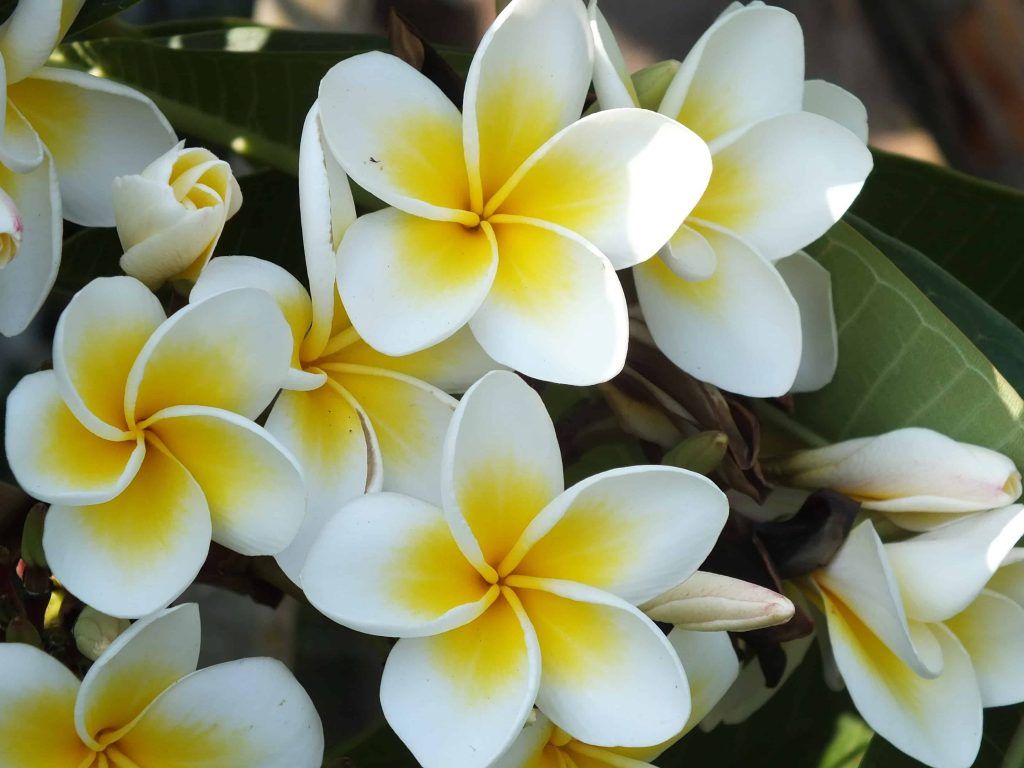
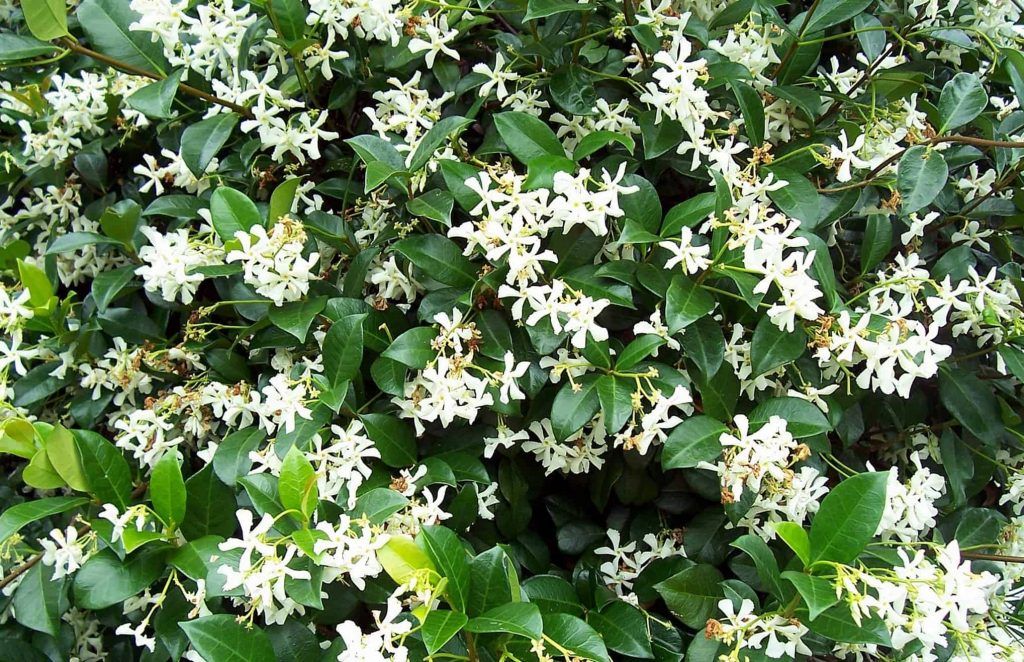
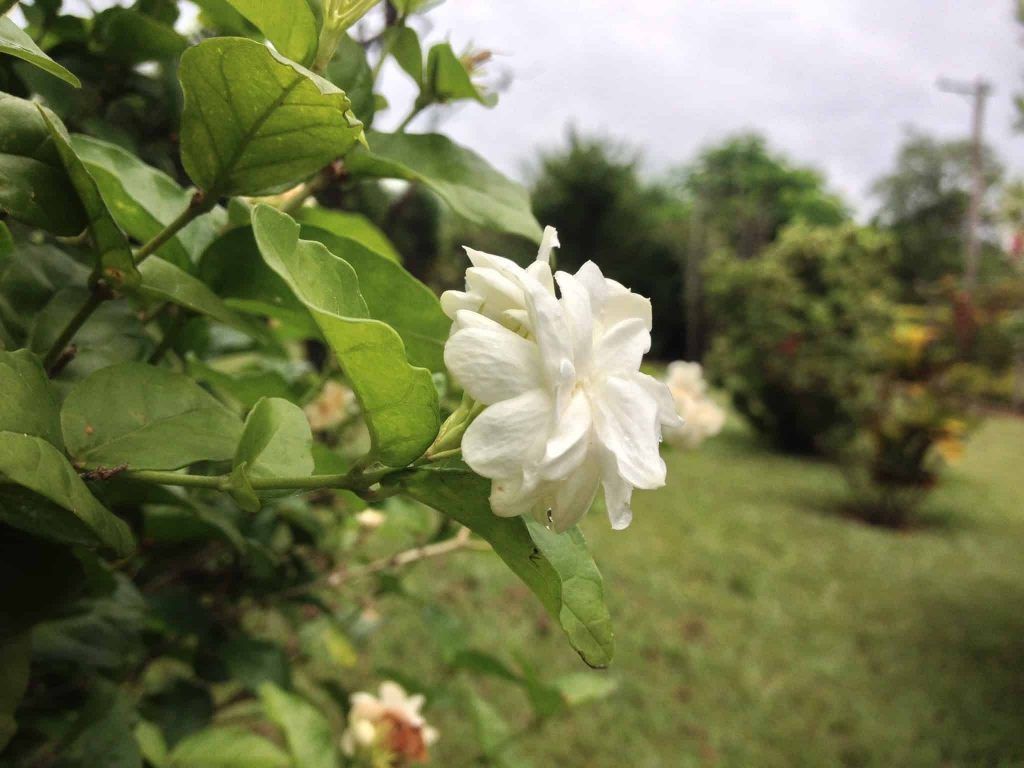
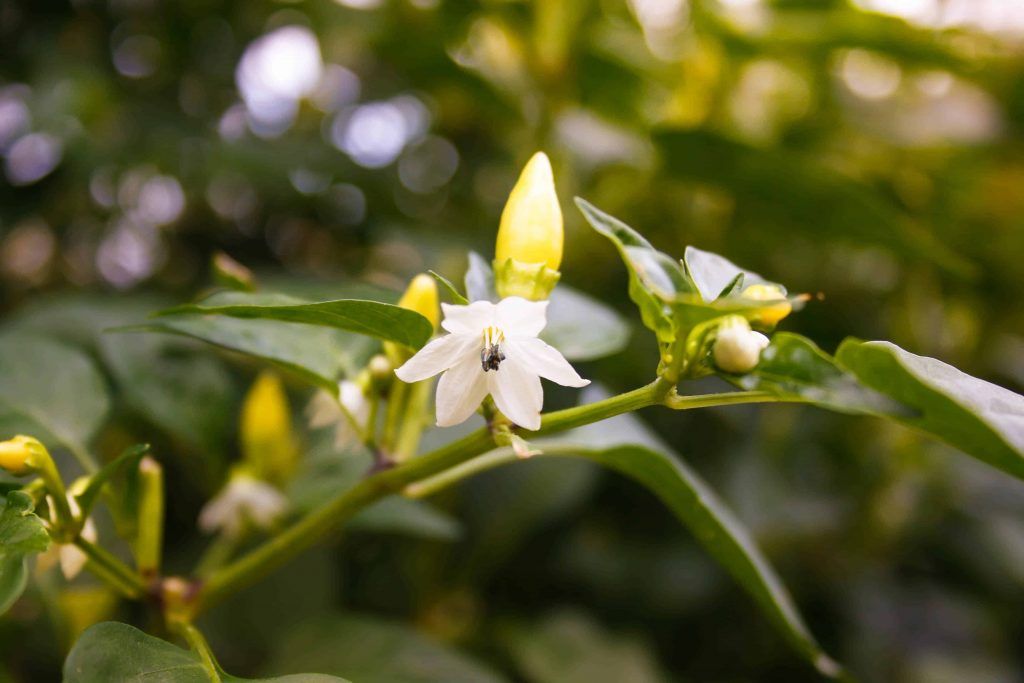
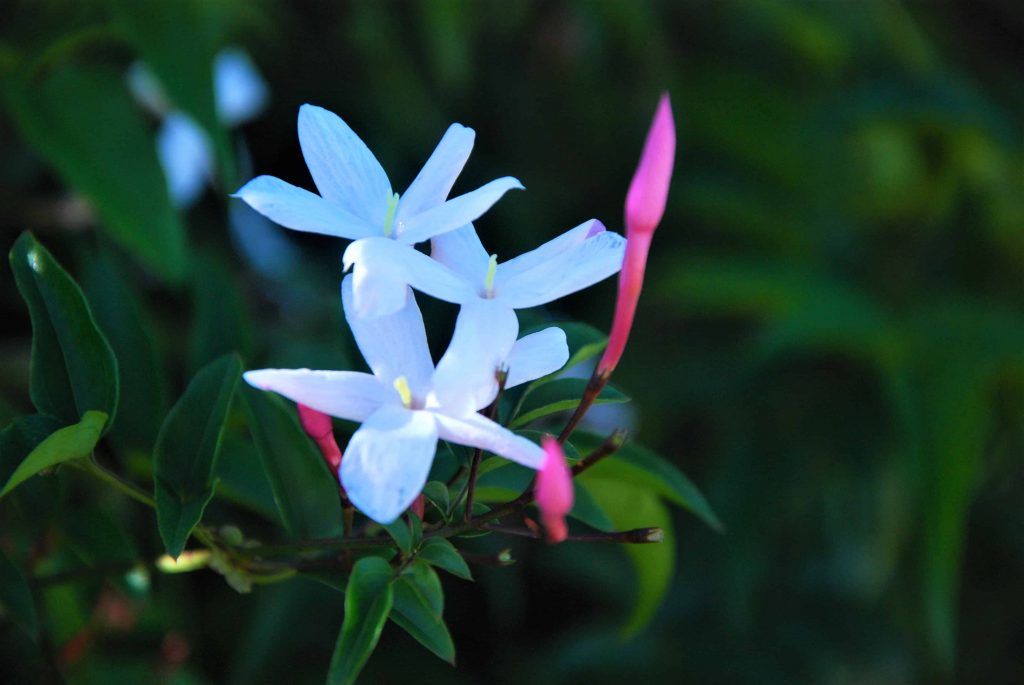
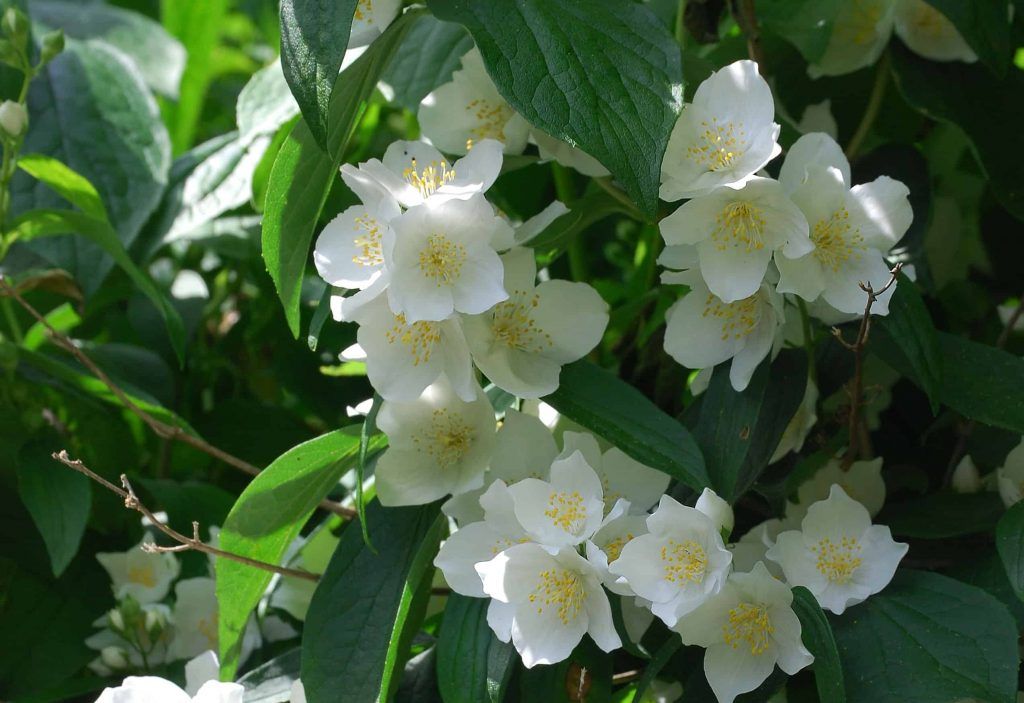
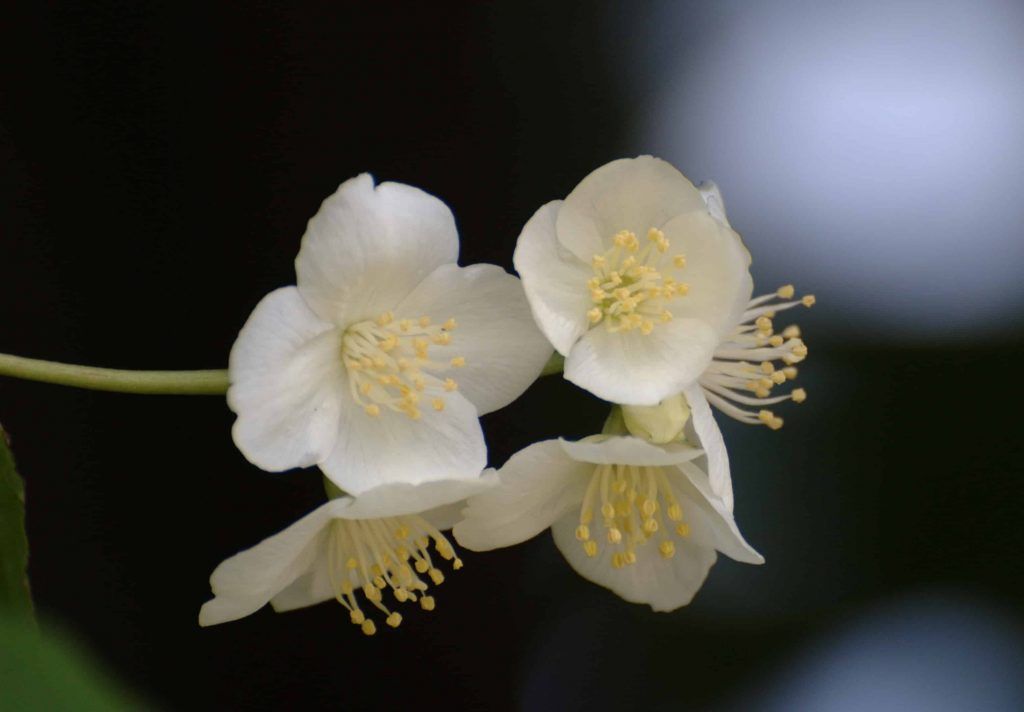
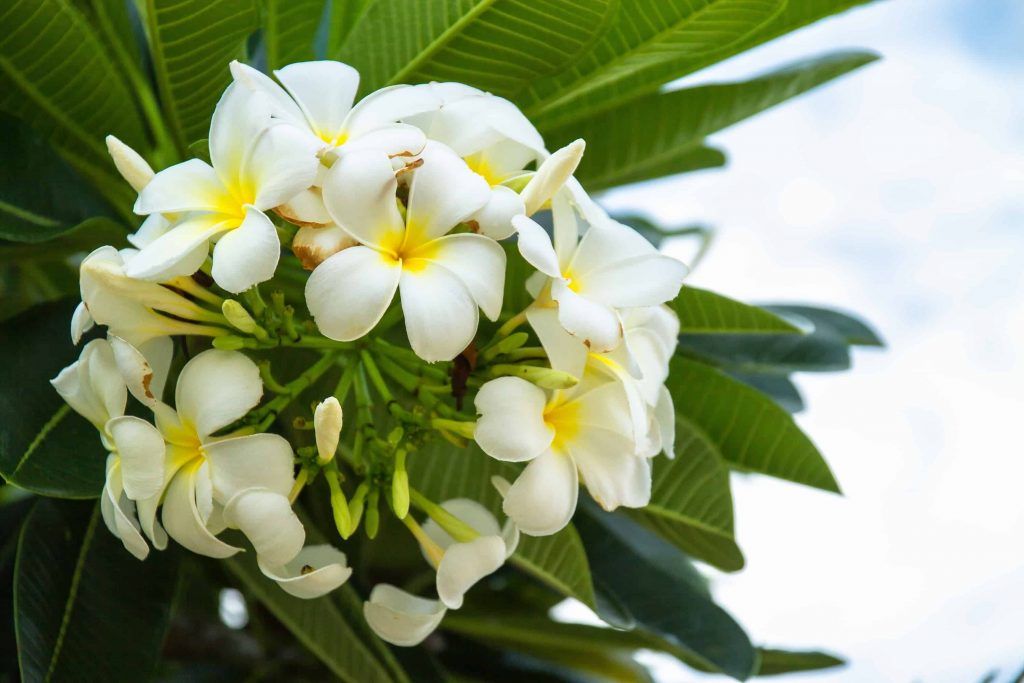

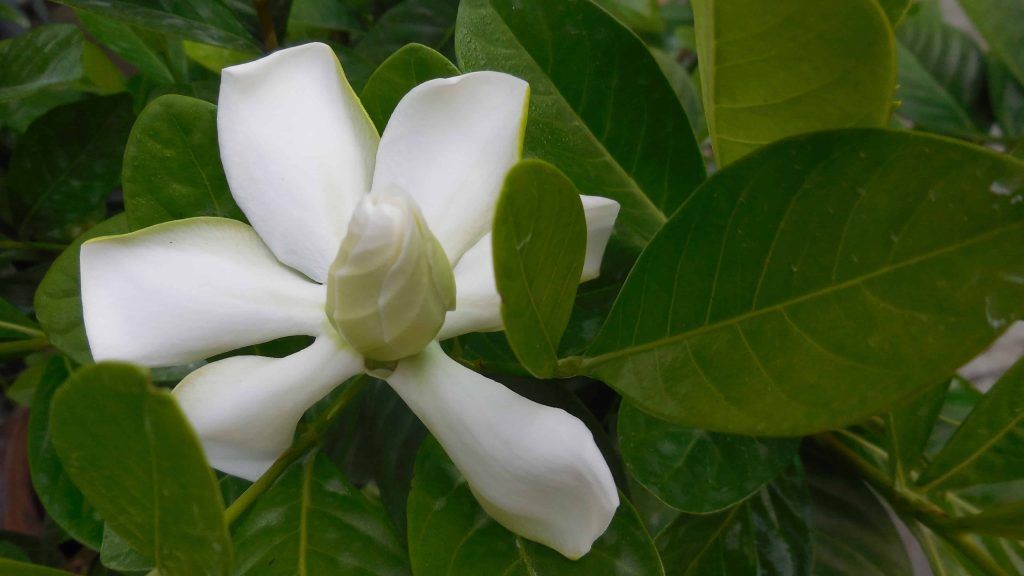
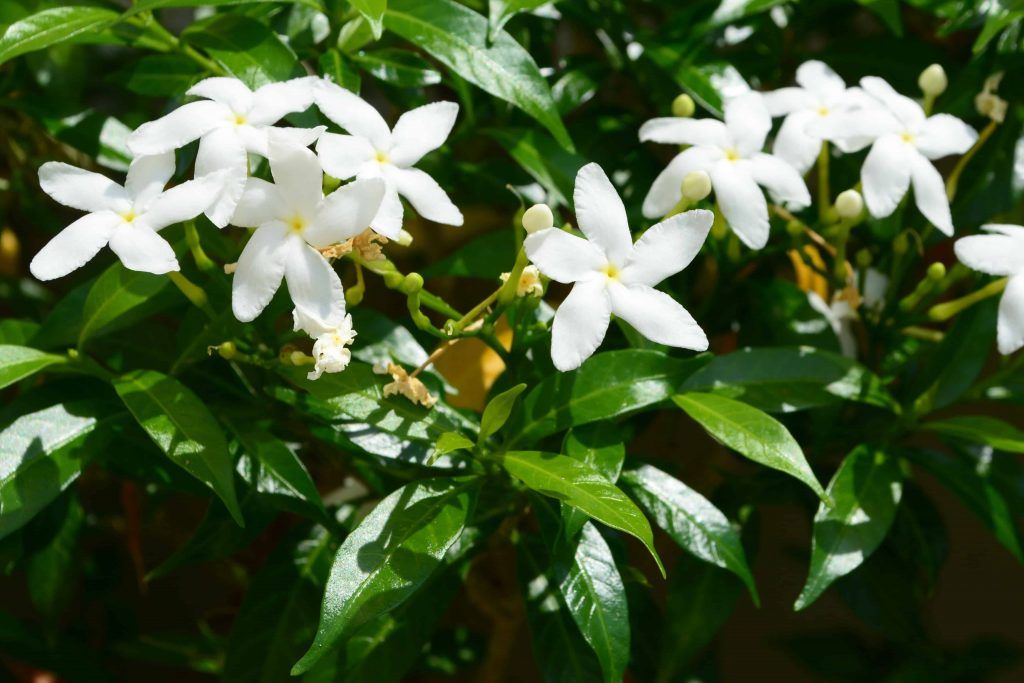




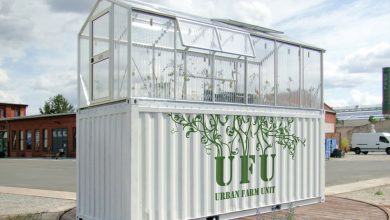
![Photo of Kalanchoe Blossfeldiana Care: [Soil, Moisture, Pruning and Problems]](https://www.complete-gardening.com/wp-content/uploads/2021/06/412umWVeZBL._SL500_-390x220.jpg)
